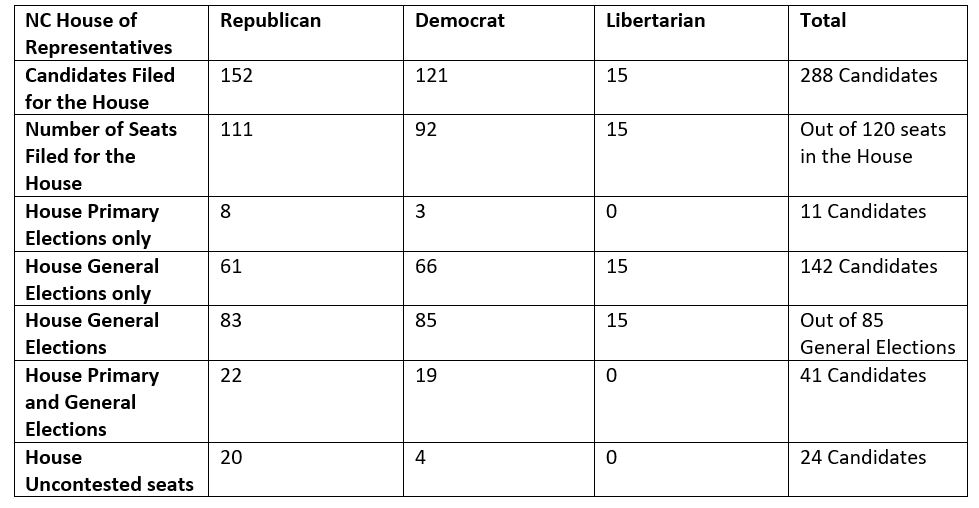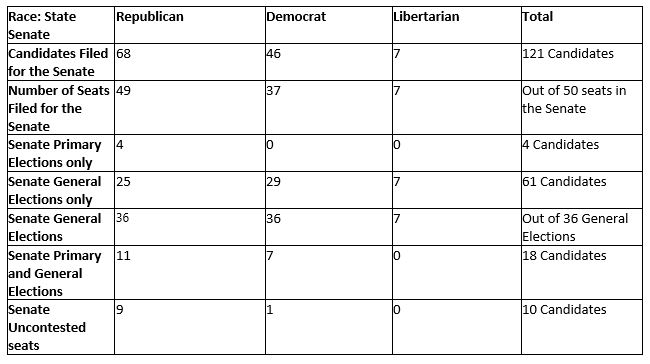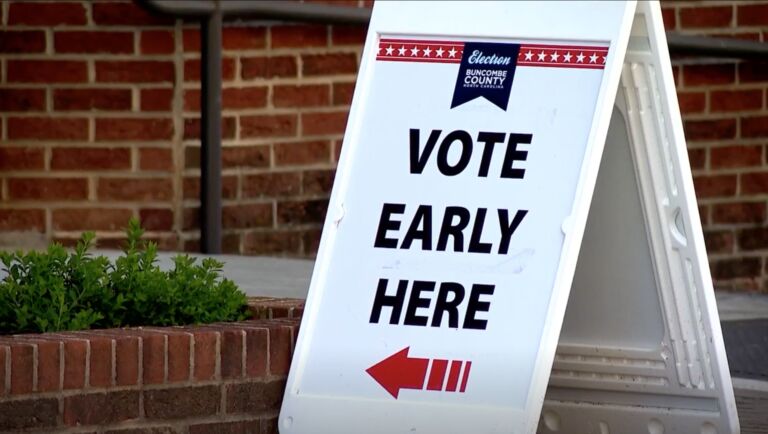As of Friday, March 4, all legislative districts and candidates are set for this year’s state legislative races. The Civitas Center for Public Integrity has created a spreadsheet with all contests for the State House and Senate alongside our CPI ranking of each district. We break the districts down by each parties’ primaries for the House and Senate primaries, general election, and uncontested seats in both the primary and general election. General elections that are still waiting for a primary election to conclude to finalize who will be facing off in the district are highlighted in yellow and labeled “Winner of Republican/Democratic Primary” in the General elections tab.
Summary of the Legislative Filing.
There are 409 candidates for the 170 House and Senate seats this year. Of those, 220 are Republicans, 167 are Democrats, and 22 are libertarians. The State House has 288 candidates filing in this year’s election. A breakdown of the data can be found below:

Due to the larger number of Republican candidates, they naturally have more primaries than the democrats. However, it’s not as large a gap as one might think. Eighty-five Republican candidates are vying for 30 House Seats in the primary. In contrast, Democrats have 51 candidates running in 22 districts in the primary.
Here is a breakdown of these primary districts based on Civitas Partisan Index (CPI) ratings:

The Senate has 121 candidates filed for 50 seats. Sixty-eight of the Candidates are registered Republicans, 46 are Democrats, and seven are Libertarian. Here is full breakdown for the Senate:

Like the House, the Senate had more Republicans vying for seats this year. 34 Republicans are competing against one another for 15 Senate seats in the primary. In comparison, Democrats have 16 candidates competing for seven seats in the primary.
Here is a breakdown of these primary districts based on Civitas Partisan Index (CPI) ratings:

Republicans recruited far more candidates than Democrats did in 2022. That is likely due to the forecasted success for Republicans in this year’s election. Democrats have far fewer primary elections and only have primaries in Democratic-favored districts. This gap in candidate recruitment suggests the potential for a Republican supermajority in both the House and Senate.


